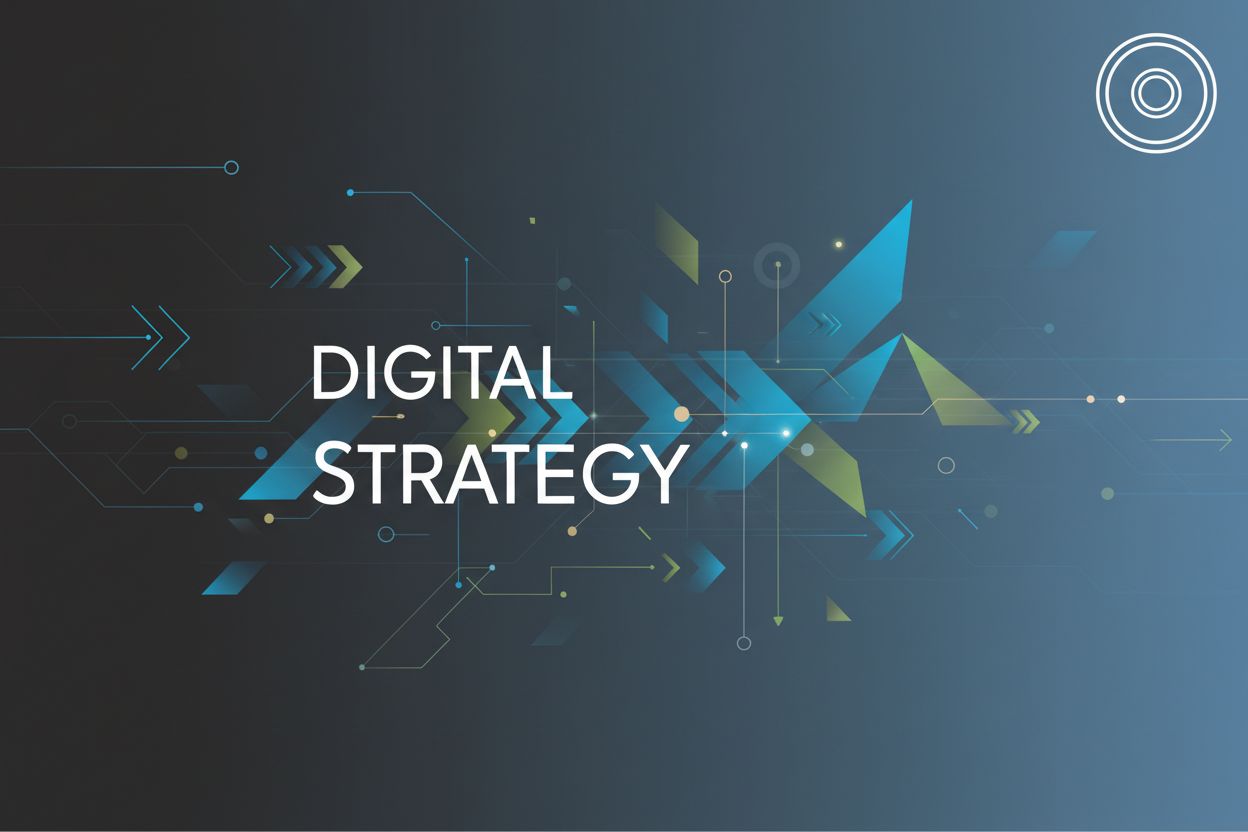Unlocking Growth: How AI-Driven Customer Segmentation Transforms Digital Marketing
TL;DR
The Evolution of Customer Segmentation: From Traditional to AI-Powered
Did you know that traditional customer segmentation, born in 1956, often misses the mark in today's dynamic market? Using AI to power customer segmentation enables precision, dynamism, efficiency, and predictive capabilities.
Here's a look at how customer segmentation is evolving:
- Traditional segmentation primarily relies on basic demographics such as age, location, and gender. This approach assumes that everyone within a demographic group behaves similarly - an assumption that Pecan.ai refutes.
- AI-powered segmentation uses machine learning to analyze vast datasets, uncovering deeper insights into customer behavior. This allows for more accurate targeting and reflects real-time changes in buyer behavior.
- AI enables dynamic segmentation, adapting to market and behavior changes, unlike the static nature of traditional methods. This dynamism ensures that marketing efforts remain relevant and effective.
- Predictive capabilities are a hallmark of AI segmentation. AI models can forecast future customer behavior, enabling businesses to personalize experiences proactively. For example, AI tools can be used to predict customer churn, assess potential lifetime value, and identify VIP customers and their preferences.
AI provides surgical precision in targeting, while traditional methods use broad strokes. AI is dynamic, adapting to market and behavior changes; traditional is static. AI offers predictive capabilities, while traditional relies on historical data. AI drives higher ROI through personalized experiences and efficient targeting.
AI-driven segmentation represents a significant leap forward, offering businesses the ability to understand and engage with their customers on a much deeper level.
Next, we'll explore the limitations of traditional segmentation methods in more detail.
Benefits of AI-Driven Customer Segmentation for Digital Marketing
Did you know that AI-driven customer segmentation can boost ROI by identifying high-intent users for personalized content? It's a game-changer for digital marketing, moving beyond basic demographics to nuanced understanding.
- Enhanced Targeting Precision: AI algorithms excel at pinpointing complex patterns and individual preferences within your customer base. This goes beyond simple demographics. Instead, AI creates more accurate buyer personas based on data. For instance, AI can analyze purchase history, browsing behavior, and social media activity to predict what a customer is most likely to buy next. This precision leads to improved ad relevance and engagement rates, ensuring your marketing messages resonate with specific customer segments.
- Real-Time Dynamic Segmentation: AI adapts to changing market conditions and customer behaviors in real-time. Traditional segmentation often lags behind, but AI ensures your marketing efforts are always relevant and timely. Segmentation evolves with customer interactions and data updates. This allows you to quickly respond to emerging trends and customer needs, optimizing campaigns on the fly.
- Predictive Analytics for Proactive Marketing: AI predicts future customer behavior based on historical data, enabling proactive marketing strategies. It identifies churn risks and lifetime value (LTV) opportunities. Informed decision-making for marketing strategies and budget allocation is possible with AI. Rather than reacting to past trends, you can anticipate future needs and proactively engage customers.
For example, AI tools can be used to predict customer churn, assess potential lifetime value, and identify VIP customers and their preferences.
AI-driven customer segmentation empowers digital marketers to achieve unprecedented levels of personalization and efficiency.
Next, we'll delve into the limitations of traditional segmentation methods in more detail.
Real-World Applications: How Brands are Using AI Segmentation
AI-driven customer segmentation is transforming how brands connect with their audiences. But how does this technology translate into real-world success?
Here are some applications of AI segmentation:
- Predicting and Preventing Customer Churn: AI algorithms excel at pinpointing users at high risk of churning. By analyzing behavior patterns, AI identifies subtle indicators that a customer might be considering leaving. This allows businesses to make targeted interventions, such as personalized offers or proactive support, to retain customers and boost loyalty. This proactive approach reduces churn rates and improves customer lifetime value, ensuring sustained revenue streams.
- Optimizing Customer Lifetime Value (LTV) Assessment: AI provides accurate LTV predictions for different customer segments. Pecan.ai notes that AI segmentation allows for data-driven decisions on marketing investment and resource allocation. By focusing on high-value customers, businesses can maximize their ROI. For example, a financial services company might use AI to identify customers likely to purchase additional products, allowing them to tailor marketing efforts accordingly.
- Identifying and Engaging VIP Customers: AI identifies high-spending and loyal customers who deserve special attention. Personalized experiences and exclusive offers for VIP segments increase customer satisfaction and retention. For instance, a luxury retailer could use AI to identify its top-spending customers and offer them exclusive previews of new collections or invitations to private events.
AI-driven segmentation is not just a theoretical concept; it's a practical tool that empowers brands to achieve tangible results. By understanding and acting on AI-driven insights, businesses can build stronger customer relationships and drive sustainable growth.
Next, we'll explore the limitations of traditional segmentation methods in more detail.
Implementing AI Customer Segmentation: A Practical Guide
Did you know that implementing AI customer segmentation involves a strategic blend of data, technology, and clear objectives? In this section, we'll guide you through the practical steps to harness the power of AI for deeper customer insights.
The first step involves gathering data from various sources. These sources can include your CRM (Customer Relationship Management) system, marketing platforms, and other relevant databases. It’s crucial to ensure you have a comprehensive view of your customer interactions and behaviors.
Next, you'll need to clean and preprocess the data to ensure its quality and consistency. This involves handling missing values, correcting errors, and standardizing formats. Businesses can also utilize automated data preparation methods to streamline this process and improve efficiency. AI can assist with this process.
Choosing the right AI tools and platforms is essential for successful implementation. You must select platforms that align with your business needs and technical capabilities. Consider factors such as ease of use, integration with existing systems, and scalability to handle growing data volumes.
Explore options like predictive analytics platforms and machine learning tools that offer customer segmentation capabilities. These platforms provide algorithms and features that enable you to analyze data and create meaningful customer segments.
To get started, define your segmentation objectives and key metrics. What are you trying to achieve with AI customer segmentation? What metrics will you use to measure success?
Configure your AI models using relevant variables and parameters. This involves selecting the data points that are most indicative of customer behavior and fine-tuning the model to achieve the desired level of granularity. Run automated analysis and refine your models based on the results.
Finally, integrate your segmentation results into your marketing and CRM systems for seamless implementation. This integration allows you to target specific customer segments with personalized campaigns and experiences.
By following these steps, you can effectively implement AI customer segmentation and drive more personalized and impactful marketing efforts.
Next, we'll explore the limitations of traditional segmentation methods in more detail.
Overcoming Challenges and Ensuring Ethical AI Practices
AI's ability to analyze vast datasets brings unprecedented power to customer segmentation, but it also introduces challenges that must be addressed. How can you ensure that your AI-driven marketing strategies are ethical and responsible?
Data privacy is paramount in the age of AI. Companies must comply with data protection regulations such as GDPR (General Data Protection Regulation) and CCPA (California Consumer Privacy Act).
- Prioritize obtaining user consent for data collection and usage. Transparency is key. Clearly explain how customer data will be used for segmentation and personalization.
- Implement data anonymization techniques to protect individual identities. This reduces the risk of exposing sensitive information.
- Employ robust data security measures to prevent unauthorized access and breaches. Regular security audits and updates are essential.
AI algorithms can inadvertently perpetuate biases present in the data they are trained on. This can lead to unfair or discriminatory outcomes.
- Regularly audit AI models for bias and fairness. This can help identify and correct any unintended biases.
- Use diverse datasets to train AI algorithms. A diverse dataset helps ensure that the AI model is representative of the entire customer base.
- Ensure transparency and explainability in AI decision-making. Understand how the AI model arrives at its conclusions.
Transparency builds trust. Customers should understand how AI segmentation works and how it affects their experiences.
- Provide clear explanations of how AI segmentation works. Avoid jargon and technical terms.
- Offer users control over their data and segmentation preferences. Allow them to opt-out or modify their preferences.
- Build trust through ethical and responsible AI practices. This involves adhering to industry best practices and ethical guidelines.
As AI transforms digital marketing, it's crucial to prioritize ethical considerations and responsible implementation. By addressing data privacy, mitigating bias, and ensuring transparency, businesses can harness the power of AI while maintaining customer trust and upholding ethical standards.
Successfully navigating these challenges ensures that AI-driven customer segmentation is not only effective but also ethical and sustainable. Now, let's explore how AI can enhance personalization in digital marketing.
Future Trends: The Evolution of AI in Customer Segmentation
Did you know the future of AI in customer segmentation involves a cookieless world and AI-generated influencers? These trends promise to redefine how brands interact with their audiences.
Here’s a glimpse into what’s coming:
- AI in a Cookieless World: The phasing out of third-party cookies is driving a need for new targeting methods. AI-driven contextual targeting analyzes the content of a webpage to deliver relevant ads. By understanding the context, marketers can reach the right audience without relying on invasive tracking. Analyzing first-party data (data collected directly from your audience) becomes essential for personalized experiences.
- The Rise of AI-Generated Influencers: Forget traditional influencers; virtual brand ambassadors are on the rise. These AI-generated personas offer consistency, scalability, and full brand alignment. Companies can use AI to create content that resonates with their target audience.
- Privacy-centric Marketing: As AI evolves, privacy will be paramount. New marketing approaches will prioritize user consent and data protection. Companies will need to be transparent about how they collect and use customer data.
As third-party cookies disappear, AI steps in to fill the gap with smarter, privacy-respecting methods. AI algorithms analyze webpage content in real time, matching ads to the context of the article or video. This ensures ads remain relevant without relying on user tracking.
Imagine influencers who never go off-script and perfectly embody your brand. AI makes this a reality with virtual influencers. These computer-generated personas engage audiences much like human influencers but offer greater control and consistency.
For example, a healthcare company might use AI to create a virtual health coach who provides personalized advice and support. A retail brand could develop an AI-generated influencer to promote new clothing lines.
The future of AI in customer segmentation is about being smarter, more personalized, and more respectful of user privacy.
Next, we'll explore how GetDigitize can help elevate your brand with strategic solutions.
Conclusion: Embracing AI for Transformative Marketing Results
AI-driven customer segmentation isn't just a futuristic concept; it's a present-day necessity for marketers aiming to maximize impact. By embracing AI, businesses can unlock unprecedented levels of precision and personalization.
- Superior ROI: AI-driven segmentation leads to better ROI by targeting high-intent users with personalized content. Rather than casting a wide net, AI helps you focus on the most promising leads.
- Real-time Insights: AI adapts to changing market conditions and customer behaviors in real time. This ensures marketing efforts remain relevant and timely, unlike traditional methods that rely on static data.
- Predictive Capabilities: AI predicts future customer behavior, enabling proactive marketing strategies. You can anticipate customer needs and engage effectively.
It’s important to remember that AI's power comes with responsibility.
- Data privacy must be a priority. Comply with regulations like GDPR and CCPA to protect customer data.
- Bias mitigation is essential. Regularly audit AI models to prevent unfair or discriminatory outcomes.
- Transparency builds trust. Clearly explain how AI segmentation works and give users control over their data.
The future of marketing hinges on AI. As AI technologies evolve, businesses must embrace these strategies to stay competitive.










